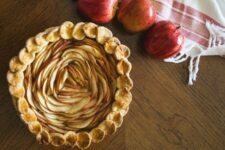
Losing weight…the elusive goal
Ask Mr. Pedometer and Friends…..about Weight Loss and Obesity
Q: Mr. Pedometer, am I the only one who repeats the same resolution for each New Year — namely, to lose weight?
A: Nope! That very well may be the most common item on people’s lists of New Year’s Resolutions. Losing weight seems  like a more elusive goal as we age. However, it is an important one. A recent newspaper article by Sandee LaMotte of CNN gave the dire prediction that half of Americans will be obese within a decade unless major changes are made.
like a more elusive goal as we age. However, it is an important one. A recent newspaper article by Sandee LaMotte of CNN gave the dire prediction that half of Americans will be obese within a decade unless major changes are made.
The prediction is based on an article recently published in the New England Journal of Medicine. The study analyzed 26 years if Body Mass Index (BMI) data from over 6 million American adults. The researchers concluded that by 2030, 1 in 4 Americans will have “a body mass index over 35, which means they will be more than 100 pounds overweight.” That implies huge health and economic repercussions.
“In all 50 states, at least 35% of the population will be obese, the study found.” Hardest hit are 29 states, mostly in the Midwest and South, where the prediction is that 50% of their residents will be considered obese. Sub-populations most at risk for severe obesity include “women, non-Hispanic black adults, and low-income adults who make less than $50,000 per year.” For adults “with less than $20,000 annual household income, severe obesity will be the most common BMI category in 44 states,” according to lead author Zachary Ward.
How has this happened? Here are some of the factors:
- Sugar-sweetened beverages and ultra-processed foods are more widely available
- Food prices – “including unhealthy fast-food choices” – have fallen (when adjusted for inflation)
- Many people have limited options for physical activity
What can be done to avoid the predictions for obesity? Here are some ideas shared in the article:
- Improving local public transportation systems to encourage walking instead of driving
- Keeping public schools open on weekends and summers to provide access to gymnasiums and swimming pools
- Increasing support for farmers’ markets to provide more access to low-cost fruits and vegetables
- Eliminating tax deductions to businesses for advertising unhealthy foods to children
An earlier Harvard study found that “the most cost-effective solution was the tax on sugar-sweetened beverages. The study found the tax saved $30 in health care costs for every dollar spent on the program.”


